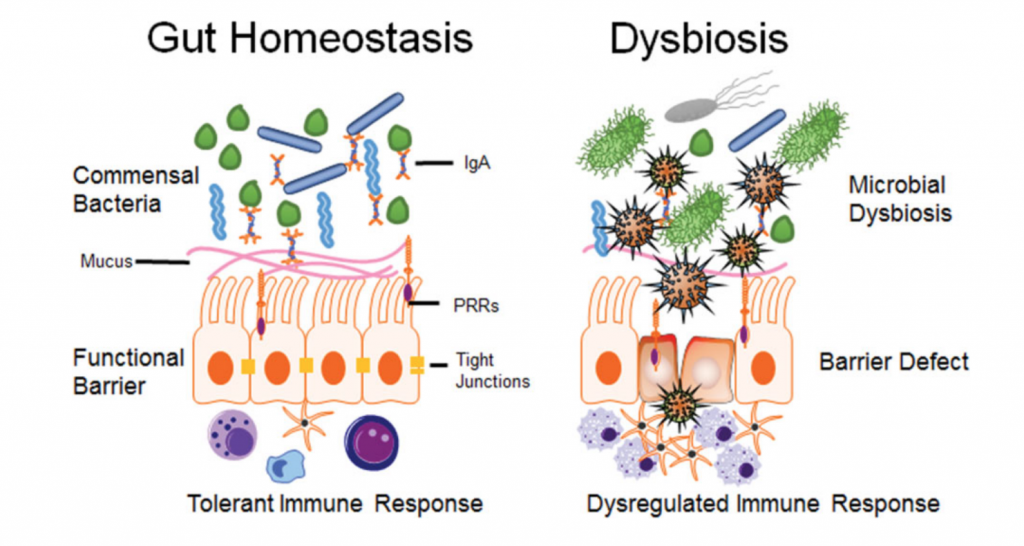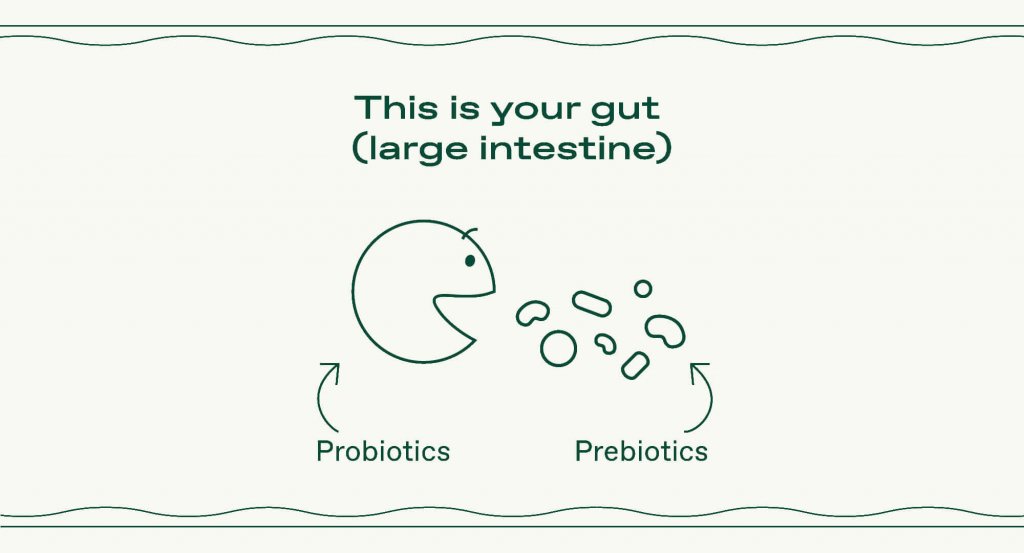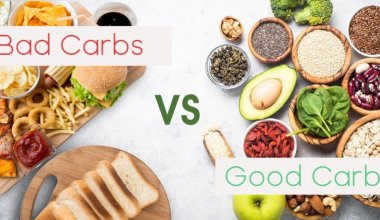In this article, all about gut bacteria:
We talk a lot about the gut microbiome, and with good reason.
It’s a unique and powerful tool for creating and maintaining optimal health. But how exactly do we leverage its maximum potential? Who are these microscopic bacteria living in your gut that seem to have such outsized impact on your health? And can they really be harnessed to effectively control a broad range of health conditions in your body, like a personal medicine cabinet for your health?
Read on to learn more about the bacteria in your gut and how to specifically make the beneficial bacteria start to work for you.
The Gut Microbiome: A Quick Refresher
There are trillions upon trillions of microscopic organisms living in (and on) your body. In fact, there are three times as many of these organisms as there are human cells in the body!
These bacteria, viruses, and fungi all work in a delicate balance to control most of your bodily functions.
The largest collection of these bacteria live in your large intestine — called your gut microbiome — and they hold the keys to your health.
Some of them regulate your heart function. (1) Some send signals to your brain and influence whether you’re feeling happy or stressed. (2) Others can keep your blood sugar in check, reduce inflammation, and even help you sleep. (3, 4, 5) And the list goes on.
However, not all of these bacteria are beneficial for your health. And when they get out of balance, they can make you sick. (6, 7)
Enter the “bad guys.” There are a number of these bad bacteria that are usually lurking in the shadows, in small numbers, looking for their opportunity to pounce. When they do, they create havoc. (8)
When these bad guys are allowed to thrive—unchecked by the good guys—bad things can happen. Some of them can make you sick by making you more vulnerable to getting colds and the flu. (9, 10) Others affect your immune system and drive up inflammation. (9, 11, 12) Some bad guys create major digestive issues that can lead to things like Irritable Bowel Syndrome (IBS) or leaky gut. (13) Even worse, some make you more susceptible to serious chronic diseases like diabetes, heart disease, and even depression. (1, 3, 14)
Technical Gut Speak
Learning about the gut microbiome can be kind of intimidating. But we think it’s an exciting challenge to better understand how you can get your gut microbiome working for you.
Scientists like to use all kinds of technical terms to talk about simple bodily functions that make things seem more difficult than they actually are.
Let’s take a look at a few of the words related to gut health that you might come across which may cause you to pause.
Diversity
When talking about the gut microbiome, diversity is an important concept. (15) We want a broad range of species that collectively have a beneficial effect on health. The more diversity we can foster, the better the chances that when bad guys crop up trying to gain power, there will be corresponding classes of good guys to overwhelm them.
Homeostasis

This is a fancy word that means “balance.” When something is in homeostasis, it is in a state of balance. (16) When talking about the gut microbiome, it’s basically referring to a healthy state of balance between the different classes of bacteria in your gut. This isn’t to imply that the beneficial bacteria, harmful bacteria, and indifferent bacteria are all equal in number, but rather that they are in a state of balance and harmony and you are less susceptible to health issues and disease. The classes of good guys are able to effectively keep the bad guys and their mayhem to a minimum.
Dysbiosis
Dysbiosis is another complicated word that implies the opposite of homeostasis. (17) When there is dysbiosis in the gut microbiome, things are out of balance. This means that some harmful bad guys have grown stronger in your gut and are doing their best to wreak havoc. If your gut is in a state of dysbiosis then you are likely either suffering from a health condition that is out of control or even a serious chronic disease.
What We Know About Gut Bacteria: The Good Guys, Bad Guys, and Everyone In Between
There are trillions of bacteria residing in your gut, so it shouldn’t come as a surprise that not all of these little guys are created equal. Different gut bacteria do different things to your health. (8)
Here’s a simple way to think about it — Imagine your gut microbiome as an arena with multiple battlefields inside it.

In each battle, there are hordes of noble troops — the good guys — on one side assembled with a common goal: to improve a specific area of your health and keep you operating at your best.
On the other side of each battle there are evil, good-for-nothing enemies — the bad guys. They want to keep you down, weak, and powerless.
(Meanwhile on the sidelines, there are a bunch of indifferent observers, not really picking sides but just going along with the flow of whoever wins. These are the neutral, or unknown, bacteria.)
Every day, the opposing forces are battling it out in your gut for control of different aspects of your health.
These bacteria fight each other, each trying to gain control of the territory — just like in a real war. And just like in war, there are serious implications on the outcomes of these battles, as they determine what happens in your physical (and even mental) health. (8)
The majority of these battles are silently waged, but we definitely feel the results of them based on our health symptoms.
The Bad Guys
It is sometimes easy to determine exactly which microbes are responsible for what. There are some obvious infamous bad guys, the sinister villains who can make us very sick:
- Pathogenic E. coli — these guys are famous for causing you lots of gastrointestinal issues and making you run to the bathroom. However, there are actually several strains of E. coli in the gut that are completely harmless and indifferent to our health. (18)
- Salmonella — these bacteria attach to the intestinal lining and produce toxins that can make you downright miserable. (19) Luckily, short-chain fatty acids produced when beneficial bacteria in your gut consume prebiotics like resistant starch have been shown to combat these nasty guys. (20)
- Candida — this is a type of fungus that, when allowed to grow unchecked, can cause a myriad of health issues. There are actually over 200 strains of candida, although most of which actually aren’t problematic. (21)
- Clostridium difficile — the bacteria responsible for Clostridium difficile (C diff) diarrhea is of of the most common hospital-acquired infections. In fact, C diff often results after treatment with antibiotics, as it more effectively kills the good bacteria allowing the bad bacteria to overgrow.
The Good Guys
And then there are the good guys, the stars of the team, the ones we want to be the strongest and most viable. They work tirelessly on your behalf to make sure you’re healthy and in control of different aspects of your health.
It’s important to note that not all good guys are created equal, either. There are specific beneficial bacteria that impact your health in different ways. Some help control how you metabolize food and impact whether you gain weight. (3) Others help keep your blood sugar levels under control. (22) Some produce serotonin to improve your mood (23), and others help keep your cholesterol levels under control. (24)
Below are two of the most common groups (technically called ‘genus’) of bacteria known for their healthful benefits that are found in many probiotic products:
- Lactobacillus — these helpful little guys have been linked to the prevention of type-2 diabetes, periodontal disease, and has an overall stellar reputation for supporting the immune system. (25) There are several species of Lactobacillus that make their home in the gut microbiome.
- Bifidobacterium — one of the first bacteria to colonize the gut in infants, Bifidobacterium are a collection of many different species that have been shown to fight constipation, diarrhea, ulcerative colitis, and eczema. (26)
But we’d like to go a level deeper. Each ‘genus’ of bacteria is actually composed of numerous ‘species’ of bacteria, each of which having different properties and benefits (and in fact many of those species even have different types of strains).
Below are examples of a few other genus and species of bacteria that have been shown through clinical studies to positively impact very specific aspects of your health.
- Lachnospiraceae and Ruminococcaceae — There is emerging evidence that the Lachnospiraceae and Ruminococcaceae genus play important roles in blood sugar management because they are major producers of butyrate, a powerful short-chain fatty acid produced by fermentation in the gut (27).
- Lactobacillus Plantarum and Lactobacillus Rhamnosus — Researchers have become highly interested in the relationship between gut bacteria and heart health. Recent research suggests potential benefits of Lactobacillus plantarum and Lactobacillus rhamnosus bacteria species on the reducing incidents of myocardial infarction, a main contributing factor in cardiovascular disease (29, 30). Another recent study suggested that Lactobacillus acidophilus also plays a potential role in balancing blood sugar and inducing positive effects on diabetes (28).
- Lactobacillus and Streptococcus spp. — These two additional species have been shown to have positive effects on blood pressure regulation in several studies (31, 32).
- Faecalibacterium and Coprococcus — Mental health (and the gut-brain axis) is another pathway that can be positively altered through beneficial bacteria in the gut and production of the short-chain fatty acid butyrate. (2) A recent study shows that the Faecalibacterium and Coprococcus genus were inversely associated with depression and correlated with a higher quality of life (33).
Everyone Else
While we do know that there are tons of good and bad guys which affect specific bodily functions, there are still trillions of microbiota that are neither good nor bad, but are bystanders of these battles in your gut. Many of these bystanders appear to have limited impact on your health, while others are yet to be classified or fully identified. The gut microbiome is so vast and complex that scientists will be uncovering new species of bacteria and increasing their understanding of their roles for many years to come!
Defining: Prebiotics and Probiotics
So, we’ve talked at length about the good guys vs. the bad guys. And maybe by now, you’re wondering: how exactly do I strengthen the good guys in my gut? Well, the answer is actually pretty simple. Although probably different than what you’ve been led to believe in the past.
Maybe you’ve heard of probiotics. Seems like everyone from grandma to the grocery store clerk is recommending them these days. And they can potentially be part of helping
to support the good soldiers in your gut. But the truth is, they usually aren’t very effective without prebiotics.

You see, probiotics are supposed to be live, functioning good bacteria. You consume them, and the idea is that they travel down to their good guy buddies on the front lines, serving as a backup battalion.
The problem is, with most products that are labeled as “probiotics” the soldiers aren’t actually able to bypass digestion and make it all the way to the large intestine where the war is being waged. (34)
If probiotic supplements are designed well, effectively formulated, and fed the right nutrients, they can colonize and make a difference. But if they get digested and disposed of before they can make it to their destination, it’s essentially money down the drain.
If they don’t colonize, the minute you stop taking those probiotics, they disappear. (35) So while they are good in theory, in practice, probiotics have to be properly designed to have a real impact. (36)
And one of the biggest reasons probiotics don’t work: they need to be fed — to grow in strength and numbers — with prebiotic fiber. And the vast majority of people don’t eat nearly enough daily fiber. (37)
Here’s why prebiotics are the perfect food for probiotics: they can’t be digested, so they end up in the large intestine, providing a five-star meal for the the beneficial bacteria. (38, 39)
And when the good guys get the food they need, it’s like supplying them with the best, most effective ammunition for their battles. They get stronger, they grow in numbers, and defeat the bad guys easily.
Short-Chain Fatty Acids: Where the Magic Happens
Once the good guy bacteria are fed with prebiotic fiber, and they grow in numbers and become stronger, they defeat the bad guys in battle in the gut microbiome. (8) As a result, many of the good bacteria produce metabolites (or small molecules) called short-chain fatty acids (SCFAs) — one important example being butyrate. (40) This is where the magic happens.
Researchers have identified that SCFAs are the primary way that your gut influences several conditions and systems in your body. (41) Think of SCFAs as messengers. These SCFAs are like signals to systems throughout the body, directing them to function at peak performance.
How effectively a bacteria is at producing SCFAs is a key indicator of just “how” beneficial that good guy is for different conditions in your health. In addition to creating a strong intestinal lining , SCFAs have been shown to play a key role in several critical bodily functions,including (42, 43):
- Reducing cholesterol levels
- Reducing blood sugar levels
- Reducing inflammation
- Supporting white blood cells
- Helping with weight control
- Preventing heart disease
- Encouraging a healthy aging process
 The goal is to strengthen the right good guys in your gut to affect a specific bodily function, and for them to produce SCFAs to improve specific health conditions in your body. And the best way to do that is to continually feed the most beneficial gut bacteria with the right prebiotic fiber.
The goal is to strengthen the right good guys in your gut to affect a specific bodily function, and for them to produce SCFAs to improve specific health conditions in your body. And the best way to do that is to continually feed the most beneficial gut bacteria with the right prebiotic fiber.
Cutting Edge Solutions for Optimal Health
So if you’ve tried probiotics in the past, and haven’t gotten the results you were hoping for, it’s probably because they were missing the key ammunition to really win the battles in your gut.
Prebiotic fiber just may be one of the biggest missing pieces to helping balance your gut microbiome by helping strengthen and diversify the good bacteria. (39) This is especially important given that almost none of us get enough dietary fiber on a daily basis. (37)
Think of it this way…Your gut can essentially serve as a medicine cabinet for your health. If you truly want to gain control of your health, then you need to keep your personal medicine cabinet well-stocked (i.e., nourish your gut microbiome) and understand how to use it effectively to harness its power.
One effective but highly involved approach is to research which specific good guy bacteria have been shown to affect the specific health outcome you’re trying to achieve, and also identify their favorite source of nutrients to help them thrive. (44) You could then try to find effective ways to strengthen those good guys in your gut through foods & supplements that contain those probiotic species, but you’d also need to ensure they are designed in a format that ensures they will survive digestion and colonize in your gut. (45) You would still also need to incorporate the right nutrient sources to keep those good guys strong and thriving. This approach can feel overwhelming given the complexities of the thousands of species of bacteria in the gut microbiome and the lack of effective and reliable probiotic solutions in the market.
A MUCH simpler approach is to feed the most beneficial good guys in your gut with the most effective prebiotics. Consuming prebiotics is one of the easiest and most reliable ways to improve your gut health and positively affect change within your body across a broad range of conditions. (46) Prebiotics help strengthen the good guys helping them win many important battles being waged in your gut microbiome, which positively affects a number of symptoms you may be dealing with.
One of the very best types of prebiotic fiber is resistant starch, a truly superpowered prebiotic that resists digestion and makes to the gut to feed some really beneficial good guys. (47) Resistant starch is found in real plant foods, like green bananas, oats, legumes, cooked-then-cooled potatoes and rice, and whole grains. Taking supplements and meal-replacement shakes with concentrated levels of resistant starch can be a very beneficial and reliable way to get your daily dose of prebiotic fiber, especially since resistant starch levels in most food sources are typically quite low.
When getting enough prebiotic resistant starch in your diet, you can expect an improvement in gut microbiome diversity and an abundance of the good guys. (48) You can use prebiotics and selective probiotics to work together synergistically to improve specific health conditions including blood sugar, cardiovascular, mental health issues and more.
Simply feed the good guys and reap the benefits. Your body will thank you.







